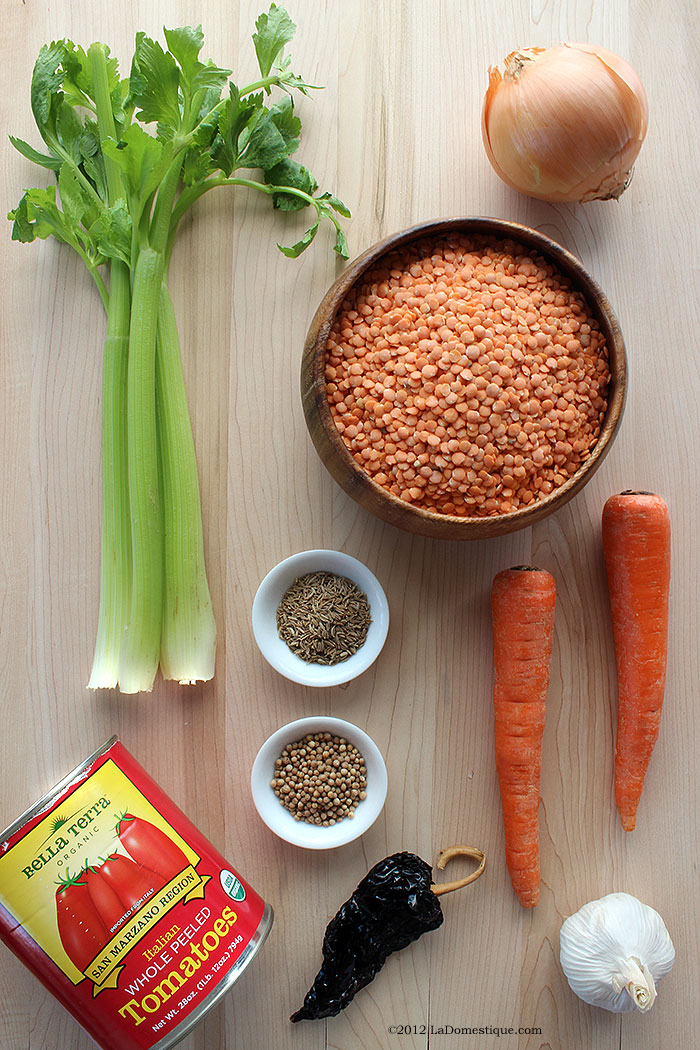To kick my first month off right, I’ve asked some of my favorite bloggers to share their secrets for being a foodie on a budget. Here, Jessica O’Toole of la Domestique offers insight into curating a well-stocked pantry as the key to eating splendidly on a budget.
A well-stocked pantry guided by the seasons is the key to cooking creatively on a budget. At la Domestique, the pantry is broadly defined as what we keep in our cupboards, as well as the refrigerator and freezer. Being a foodie on a budget is a challenge, but I’ve got 3 tips to make cooking with the best seasonal ingredients easier on the wallet.
- First, always have the basics on hand. Think of a meal as a combination of protein (for sustenance), carbohydrates (for energy), and fresh produce (for vitamins and minerals). Rather than running to the store every time you need something for a recipe, keep the cupboards stocked with a variety of ingredients and a collection of spices.
Beans (canned or dried) are a good source of filling protein. Add beans to soups and pasta dishes, or purée them with herbs and olive oil to spread over bread or crackers. Toasted nuts add flavor and texture to rice pilaf, couscous or other grains, pasta, and salad. If you’ve got eggs in the fridge you’ve got a meal in the form of an omelette or frittata. Top salad and pasta dishes with a fried, poached, or hard-boiled egg. - A wide selection of grains and pastas provides variety throughout the week. Instead of pasta every night, try quick-cooking couscous, quinoa, polenta, or rice. Whole wheat pasta has a nutty flavor that’s a nice change from semolina. Substitute these new grains in familiar recipes to shake things up in the kitchen.
- Fresh fruits and vegetables are always changing with the seasons, giving us something to look forward to in the kitchen. Sometimes, we buy too much and end up throwing much of it away, rotten. When shopping at the farmer’s market or grocery store, look for three seasonal fruits or vegetables to cook with for the week. Once you are consistently using all the produce you buy, increase the number. This will help you keep to a budget and reduce waste.
Proper storage of produce is important too. Neglected fruits and vegetables will quickly rot. Remove produce such as lettuce, broccoli, cabbage, carrots, celery, and leeks from wet plastic baggies and place in a large, sturdy zip-lock bag closed almost all the way (leave just an inch or so open to allow air in) and place in the vegetable drawer of the fridge. Parsley and cilantro should be refrigerated, placed in a glass of water and topped with a plastic bag. Change the water daily and the herbs will stay fresh for about 10 days. As for fruit, once ripened it can be placed in the fridge to retard the ripening process for a day or so, buying a bit of time.
Once the pantry is well stocked with a good selection of properly stored basic ingredients, my best tip for being a foodie on a budget is to focus on learning techniques rather than recipes. If you know how to fry an egg, whip up some batter for crêpes, turn tomatoes into homemade pasta sauce, stir-fry vegetables to serve over grains, or nurture a delicious soup with a homemade stock, you are free to improvise with what’s on hand. Commit to learning one new technique a week, and before long you’ll look at your pantry with the confidence to turn any ingredient into a meal.
For inspiration on cooking with seasonal ingredients, check out the pantry at la Domestique.
Like this post? It’s included in my e-book, The Ultimate Guide to Eating Organic on a Budget. You can get more than 30 pages of tips, action checklists, and recipes for FREE when you sign up to receive updates from this blog via email.






Hey – love the new blog. I look forward to all the exciting things to come.
-the redhead-
Thank you! Will I see you at the swap this weekend?